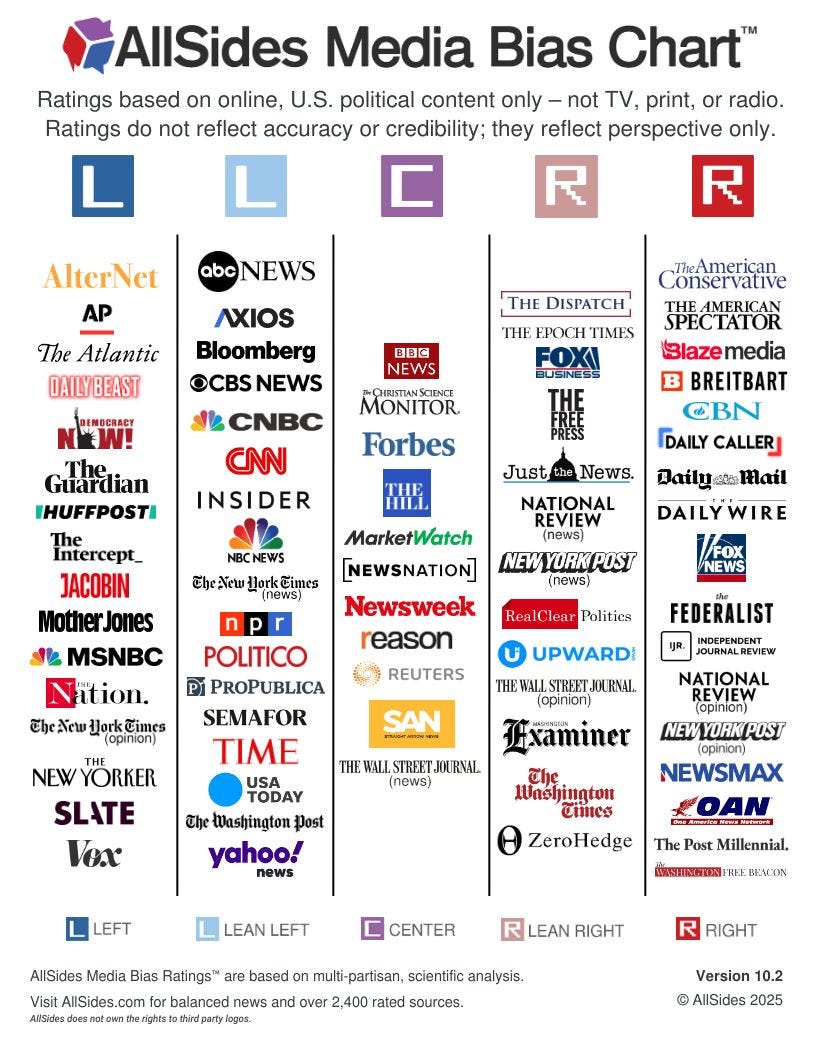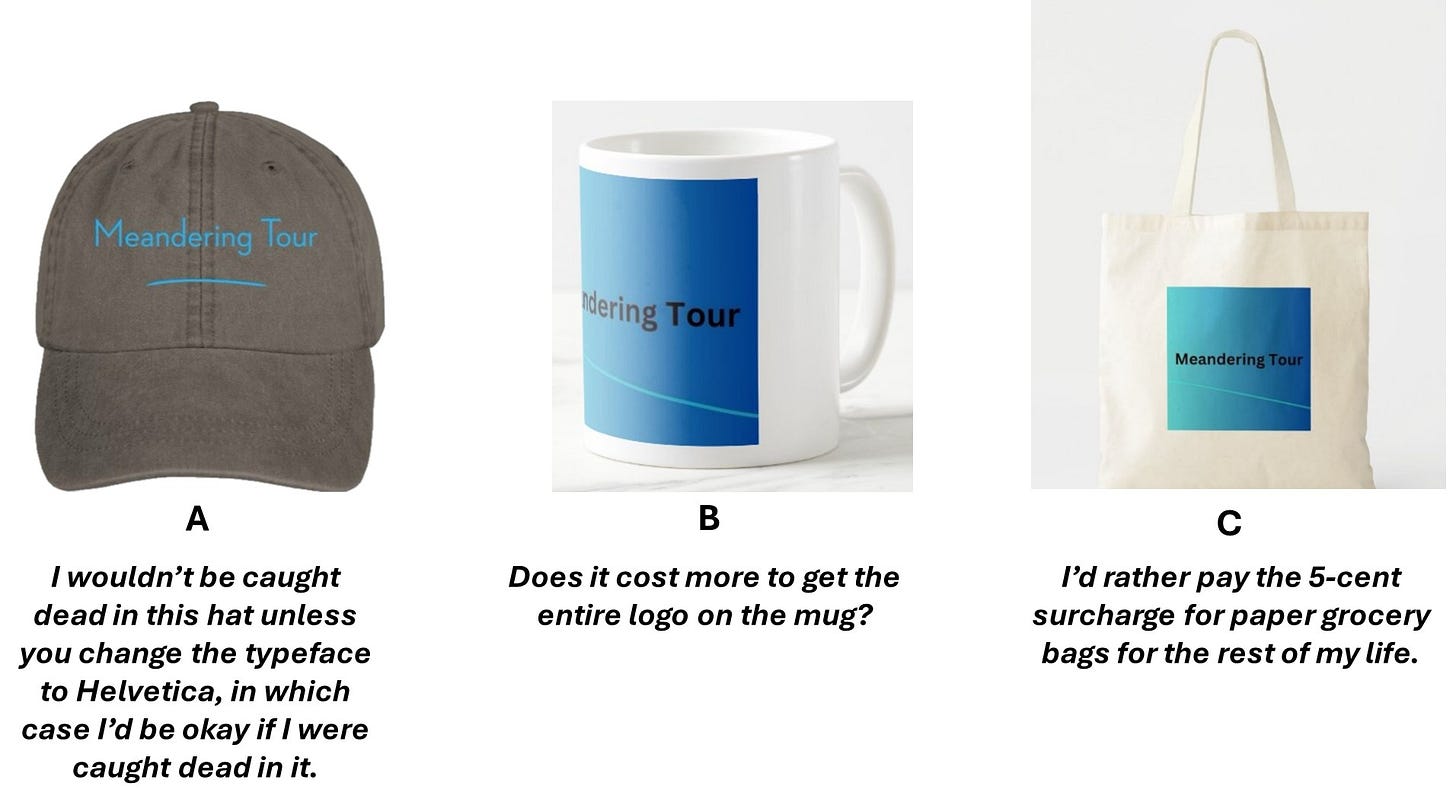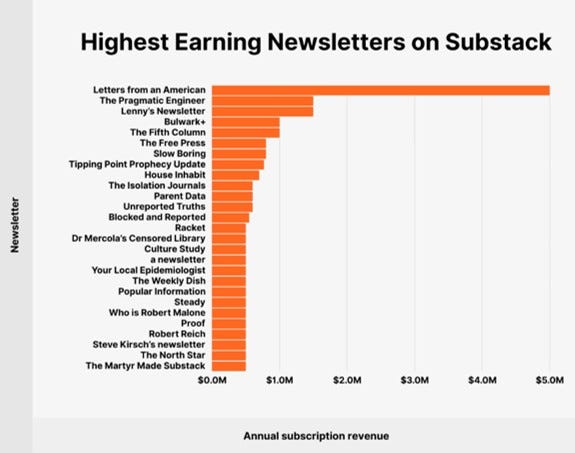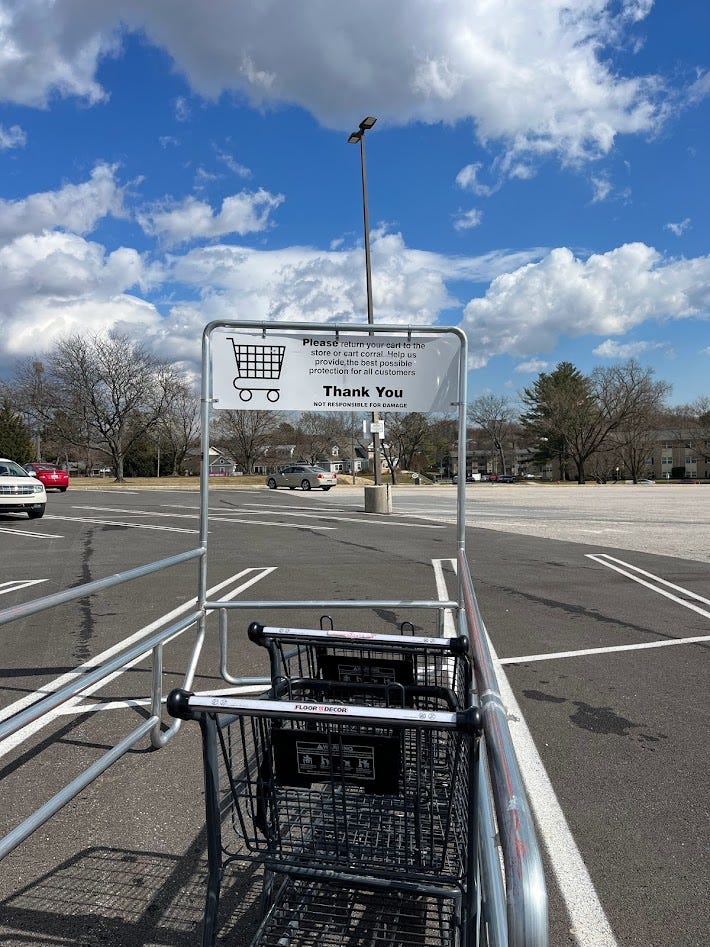5) Reflections of a Knee-Jerk Moderate
Last fall, I attended a speech by the civil rights lawyer Bryan Stevenson in Washington, D.C., where he was awarded the 2024 Moynihan Prize by the American Academy of Political and Social Science. He founded the Equal Justice Initiative (EJI) and three extraordinary civil rights museums in Montgomery, AL, known collectively as the Legacy Sites. I cannot overstate the historical, educational, and emotional value of an overnight trip to visit them all.
Stevenson spoke about the “importance of proximity” in righting societal wrongs, stressing that “too many policies have been made by individuals with insufficient knowledge of people who are affected by those policies.” He described, for example, how EJI meetings with indigent families “revealed difficulties and nuances previously not considered by broader welfare programs” and resulted in meaningful policy outcomes.
I’ve been thinking recently about Stevenson’s concept of “proximity” in relation to the extreme political divide that afflicts our country. Before the current crisis, I used to call myself a “knee-jerk moderate” to describe not only my generally centrist views but also my desire to understand the perspectives of those with whom I disagreed. Proximity — over meals, on walks, by e-mail, on the tennis court — often facilitated meaningful political dialogue.
“The most reliable cure for confirmation bias,” wrote Jonathan Haidt, the social scientist, in an April 2022 essay in The Atlantic, “is interaction with people who don’t share your beliefs. They confront you with counterevidence and counterargument.” Proximity.
Haidt cited the English philosopher John Stuart Mill who famously wrote in On Liberty, “He who knows only his own side of the case knows little of that . . . . Nor is it enough that he should hear the opinions of adversaries from his own teachers . . . . He must be able to hear them from persons who actually believe them . . . .” Proximity.
I must confess, however, that in these extreme times, I’ve lost my appetite for proximity. I understand that the socio-political pendulum has swung very far in the other direction in reaction to perceived excesses on the other side (see Newton’s “Third Law of Motion”), but I’m having a difficult time even thinking about trying to bridge the gap.
Still, in an effort to restore a sense of balance, at least for when normalcy returns, I’ve started organizing some thoughts about how we might collectively find our way back to middle ground.1 To be clear, the following examples are not intended as remedies in and of themselves but rather as tools for possibly once again achieving some degree of mutual understanding:
Political Typology: I often urge friends and acquaintances to take the Pew Research Center Political Typology Quiz to determine which one of Pew’s nine political typology categories they fall into — a much more nuanced view of political orientation than which of two presidential candidates they might have supported. Moreover, “the gulf that separates Republicans and Democrats sometimes obscures the divisions and diversity of views that exist within both partisan coalitions – and the fact that many Americans do not fit easily into either one.” (Note that these data are from 2021; Pew updates the report every 5 - 7 years.)

Definitions of these categories can be found here. Media Bias: AllSides provides media bias ratings for over 1,400 media outlets to identify their political leanings. They help me gauge what I’m reading and adjust my perspective accordingly. One especially good example I like to cite (and, frankly, I know many liberals who don’t know this) is the placement of the Wall Street Journal news coverage in the Center while its opinion pages are in the Lean Right column.
Both Sides, Not “Both Sidesism”: Isaac Saul’s Tangle newsletter does an especially good job of examining the arguments about a single issue from both sides of the aisle. “This is not ‘both sidesism’ or giving equal weight to conspiracies and facts,” Saul explains. “Instead, we search the world for the best arguments we can find about the debates of the day, and then we show them to you. Side-by-side. So you can decide.”
Data-Driven Coverage: The indefatigable Matt Yglesias tackles tough political and policy issues in his Substack
, always with empirical evidence and a methodical analytical approach. “We believe that a better world is possible,” he explains, “but that its realization requires difficult, rigorous conversations that don’t always flatter our biases, along with a spirit of pragmatism — the ‘slow boring of hard boards’ that [the economist Max] Weber spoke of” in his 1919 essay titled "Politics as a Vocation.”Dinner in D.C.: I periodically have dinner in Washington, D.C., with two old friends, one on the left, the other on the right. We call it the “LRC Dinner Club.” Try it yourself, wherever you live.
Workshops: Braver Angels, a non-profit dedicated to political depolarization, runs workshops in communities, colleges, religious organizations, and government entities, where conservative and liberal participants attempt to “better understand one another's positions and discover their shared values.” “Our country is more divided than ever, with too many of us isolated from those who hold different views,” states the Braver Angels website. “This division damages our communities, disrupts our families, and stops us from working together for the common good. . . . [Our] mission: Bringing Americans together to bridge the partisan divide and strengthen our democratic republic.”
This is a tall order, perhaps a hopelessly naive one, at a time when lies and cruelty prevail. But the tide will turn again, and when it does, such tools might help the center hold.
In the meantime, I’ve planted this sign on my front lawn. It lifts my spirits just a bit when I see it. And I hope that perhaps, given its simple red, white, and blue design and its arguably non-controversial wording, it might appeal to passersby of all political persuasions.
4) A Grave Sin
The New York Times reported this week on the irregularly spaced letters on Pope Francis’s tombstone. His Latin name, Franciscus, looks likes this on his grave:
The “A” is standing alone to the left of center, while the “VS” has drifted off to the right. (In Latin, “V” stands for both “U” and “V.”) In other words, the kerning is concerning.
Experts in the field are incensed — and not by a thurible. “An abomination unto design,” declared one grammarian to the Times.
“Woe be unto the person who decided to do it the way that they did it,” said Charles Nix, an executive at Monotype, one of the world’s largest typeface technology companies.
Why was there no grace for the space?
When my father died 20 years ago, we proofed the text of his bronze headstone plaque over and over, before approving the design, including an Oxford comma, which we had to insert after the first draft. It was delivered without the comma! The foundry apologized and recast it.
My sister-in-law Suzie, whose mother recently died at the age of 107, was scrupulous in checking her tombstone text. “I proofread both of my parents' tombstones (and checked the kerning) about a gazillion times,” she said, befitting her career as the editor-in-chief of a major publishing house.
Where were the Vatican vetters? The Times could not immediately reach anyone at the Holy See for comment. Suzie has so many other legitimate questions. For example, why didn’t the Pope get hand-drawn, hand-hewn letters? And, are the grammarians the ones most upset, or the typography enforcers?
Evan Sult, an art director and designer, told the paper: “We all recognize that there are far more fundamentally significant aspects of lived life than how text is presented, the life and legacy of the Pope being perhaps one of the ultimate examples. Which makes it all the more incredible when the moment arrives where the typography plays its key role in the symphony of shared experience . . . and utterly blows the note.”
At least it’s not set in stone.
3) Merch
Several readers have suggested that I should offer Meandering Tour merchandise for sale. Like my college advice wallet cards, I ask? Or the alcohol and drug education laminate for teenagers? Okay, sure, they say, but focus on baseball caps, tote bags, coffee mugs, and the like. That’s ridiculous, I reply. I have about 800 readers a week, all of whom, I’m sure, have plenty of branded merch already at their disposal.
Nevertheless, to test the market, using sound survey methodology, I’ve developed the following line of products, which the merch advocates (a focus group of, uhm, five) promptly declared “hideously ugly.” One panel member denounced the style as “PPE2,” or PowerPoint Early 2000s. Which is exactly what I’m aiming for.
Please take a few seconds to indicate your top choice in the poll section located immediately below this high-end photo display. (We’re still working on pricing due to the vagaries of the ongoing tariff wars.)
2) Sidetracks
Leaderboard: Meandering Tour is only $5M off the leader.
Tonyms: My friend and former colleague Garry specializes in the art of business communication at a Fortune 1000 company. I used to call him our CSO, or Chief Spelling Officer, but he didn’t much like that title. We both enjoy discussing and joking about language, grammar, and punctuation. Garry loves, for example, talking about a relative, who used to utter malapropisms such as “Mock my words” or “You’ll rule the day.” And over the years, we would often veer into a discussion of whether the opposite of “discombobulated” might be “combobulated” or whether the opposite of “disconcerting” is “concerting.” I recently stumbled upon the mother lode of such words in a “Shouts and Murmurs” column, titled “How I Met My Wife,” from a 1994 New Yorker. It’s one page and worth a skim, for delightful passages like this:
It had been a rough day, so when I walked into the party I was very chalant, despite my efforts to appear gruntled and consolate. I was furling my wieldy umbrella for the coat check when I saw her standing alone in a corner. She was a descript person, a woman in a state of total array. Her hair was kempt, her clothing shevelled, and she moved in a gainly way.
Theory of the Week: The shopping cart theory posits that a person's moral character and self-control can by judged by whether he or she returns a shopping cart to its designated area. An online debate took off in 2017 when anthropologist Krystal D'Costa published an article in Scientific American, titled "Why Don't People Return Their Shopping Carts?" There are many who have have taken the opposing view, such as a California woman, featured in USA Today, who says she does not return her cart for safety reasons. The New York Times picked up the thread a few years ago in this article. There’s even a group called Cart Narcs, which promotes responsible shopping cart returns and posts confrontational videos online. Their website seems not to have been active for two years, possibly reflecting the dangerous nature of the organization’s work. I generally think that returning your cart is a sign of something positive, as does a friend who founded a mentoring organization and strongly supports this point of view. We often text each other photos of good and bad behavior with shopping carts, such as this one, which I personally returned to its proper place.
1) Reader Mail
Rebranding: One reader jokingly referred to this Substack as Rumbles and Musings. Not a bad idea, actually.
Three Names: I received excellent feedback on last week’s story about the significant number of celebrities and historical figures who go/went by three names:
One reader from New York explained, “In show biz, some tripleheaders came about because of union rules that require performers to alter their names to differentiate themselves from earlier union members named, say, Neil Harris or Mary Moore.”
Among the suggested additions to my list of 152 names are James McNeill Whistler and Justin Townes Earle. But other proposals are ineligible, e.g., Kareem Abdul-Jabbar, Karl-Anthony Thomas, Phoebe Waller-Bridge, Wernher von Braun.
Several people wrote to point out a mortifying error: I listed Sarah Jessica Harper, instead of Sarah Jessica Parker. Jessica Harper is my own sister-in-law. The archives have been corrected. (Nepotism Alert: Both of my SILs are mentioned here this week.)
A Second Erratum: I incorrectly credited the 80-Year-Dash story to Professor Capetta, when I should have acknowledged Coach Tedder. Mea culpa.
Are You Trying to Tell Me Something?: A reader from Baltimore sent me the following 49-word, AI-generated summary of last week’s 2,385-word column: “Scott Sherman discusses his struggles with poetry, noting his difficulty with memorization and understanding metaphors. He also highlights the rise of three-name celebrities and the use of AI in medical exams and legal tests. Additionally, Sherman shares updates on his readership and his practice of keeping a commonplace book.” It’s spot on; I take your point. That said, my word count this week is up, to 2,511. Mea culpa iterum.
Poetic Justice: My college friend Colin McEnroe responded to the piece about my difficulty understanding poetry, with the English translation (below) of “Like You,” a poem by the late Salvadoran poet Roque Dalton. I understand this one, and it’s lovely. (The Spanish version is here for those who might prefer the original.) Colin also published his own column on poetry this week, apparently prompted in part by my struggles with verse. You should read his column and also follow him here and here. But I’ll admit to being biased, as Colin had the greatest intellectual and cultural influence on me among my peers in college. (See College Advice Wallet Card, Bullet #10.)
Like you I love love, life, the sweet smell of things, the sky-blue landscape of January days. And my blood boils up and I laugh through eyes that have known the buds of tears. I believe the world is beautiful and that poetry, like bread, is for everyone. And that my veins don’t end in me but in the unanimous blood of those who struggle for life, love, little things, landscape and bread, the poetry of everyone.
I can imagine that some readers might be distressed that I have failed to offer a harsher account of the current administration, but that’s not the point of this essay. Jill Lepore provided a superb, imaginative critique in a recent issue of The New Yorker, with which I agree. Coincidentally (see the very last item in today’s column), she concludes with this line, following an excerpt of her favorite Walt Whitman poem: “There is no emergency, nor any day, that does not require poetry.”












As a former book production editor, I've kerned my share of letters. Oh, the joys of the light box and Exacto knife! Yet in all those years of eyestrain and huffing rubber cement, I never came across the word "thurible." Now I know my ignorance comes from being a non-Catholic, which is how I'm going to self identify from now on. Thank you, Scott.
I can’t rank your merch 1-3.
Best I can do is rank them in double digits